Earlier this year we received the Nikon D5500 – the latest D5xxx – advanced entry level DSLR from Nikon. The following is our impressions after several weeks of use.
Our time with the D5500 was split in two. We actually got the D5500 twice. once before we tested the D7200 and again afterwards (we had to return it the first time before we finished our review). This helped us gain a little bit more perspective on the entire 2015 range of Nikon APS-C DSLRs as a whole.
The camera is a pretty small incremental improvement over the D5300 and most compelling change is the integration of the new 3.2 inch flip out touch screen – a first for Nikon on the DSLR range.
Here are some of the main D5500 specs:
- 24.2MP DX (APS-C) CMOS sensor (no AA filter for improved sharpness).
- Processor: EXPEED 4.
- 3.2″ LCD with 1,229k dots.
- AF: 39 focus points with 9 cross types points.
- Viewfinder: 95% coverage with 0.82x magnification.
- Continuous Shooting – 5 fps.
- Storage: a single SD/SDXC card slot.
- Connectivity: WIFI/NFC.
- Price: under $700 (body only currently on Amazon).
Besides the screen there are some other small changes between the D5300 and the D5500 which we will look at later on in this review.
Build quality and construction
So far in all of our history of testing Nikon DSLRs (and we had quite a few over the years) we always liked the build quality – whether it is a small entry level camera or a large pro body and the D5500 is no exception – it doesn’t feel like cheap plastic and there were no parts that seem to fall apart of threaten to detach after some use.
The D5500 is a small camera – it might not be as small as the D3300 but it is significantly smaller (and lighter) than the D7xxx series cameras. Despite that Nikon did improve the camera’s grip which made it very comfortable to hold and use over long periods of time – in this respect it is certainty one of the most ergonomic cameras we used.
On the downside – for some reason Nikon choose to implement very small buttons – especially on the back. They might argue that the D5500 has a small body and a large vari-angle screen however from the looks of it they could have squeezed larger buttons if they really wanted. It is as if their philosophy is that entry level cameras are for people with small hands and more advanced (and certainly pro bodies) are made for people with larger hands (see the D810 which was way to big for our hands for example).
So yes, there are other things at play here (larger cameras need more room for stuff inside and for buttons and dials outside) but we feel that you can do pro level body’s smaller (the D750 is a good example although Nikon calls it “enthusiast” level camera and not a full pro body), but we still don’t have a larger entry level camera (the D7xxx series isn’t entry level by any account).
Performance
Battery life – testing battery life extensively usually takes more time than we normally have with a camera however, from our subjective testing over the review period it seems that the battery life did improve a bit and it was certainly enough for more than a full day of intensive shooting (as long as you didn’t shoot too many videos or use the screen too much).
AF – Auto-focus speed and accuracy seemed adequate (on par with the D5300) but not on the same level as the D7200.
ISO – Image quality is where the D5500 excels and when we test it against our ageing D7100 you can see the difference imminently. All images where taken on a tripod with the same lens (Nikon 35mm f/1.8 DX) at f/4 (there was a slight difference in exposure between the two images, we are aware of that, but even taking this into account – the difference between the two cameras is huge as you can see – especially starting from ISO 800 and certainly from ISO 1600 and up).
ISO 100 – D5500 on the left, D7100 on the right
 ISO 200 – D5500 on the left, D7100 on the right
ISO 200 – D5500 on the left, D7100 on the right  ISO 800 – D5500 on the left, D7100 on the right
ISO 800 – D5500 on the left, D7100 on the right  ISO 1600 – D5500 on the left, D7100 on the right
ISO 1600 – D5500 on the left, D7100 on the right 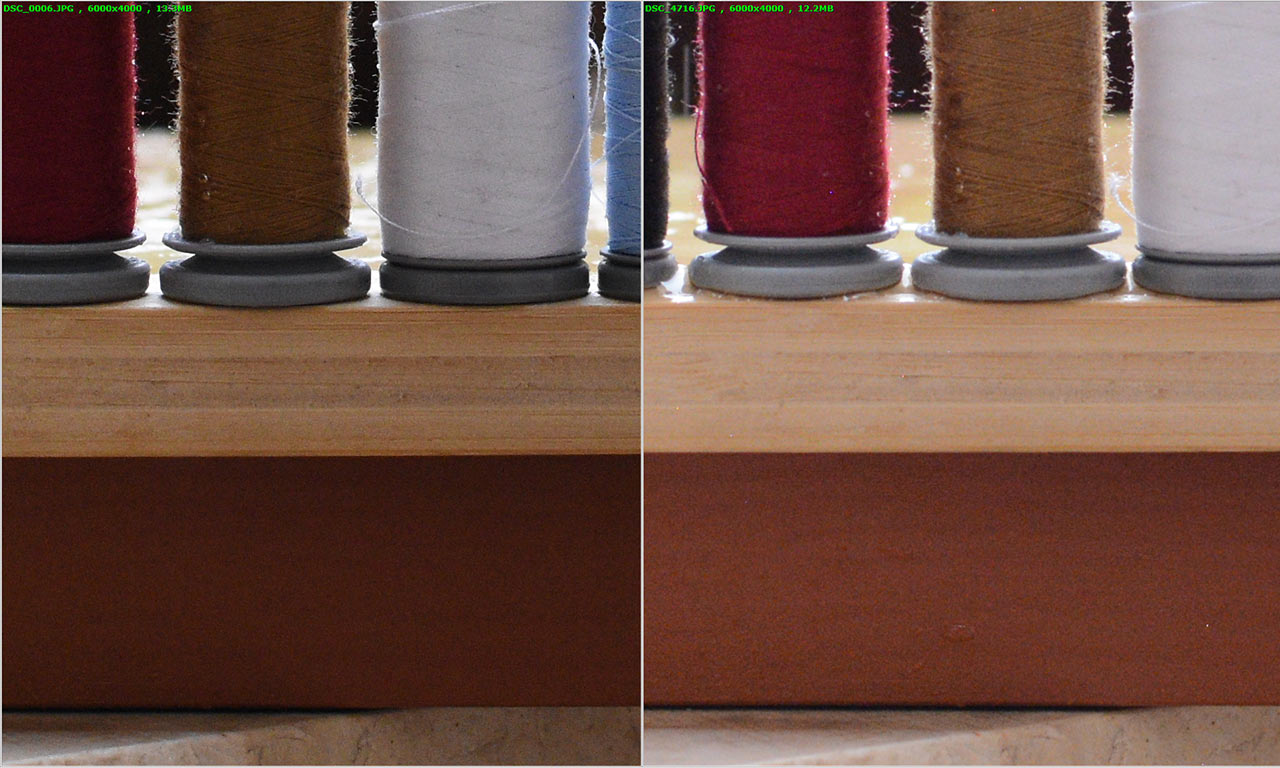 ISO 3200 – D5500 on the left, D7100 on the right
ISO 3200 – D5500 on the left, D7100 on the right 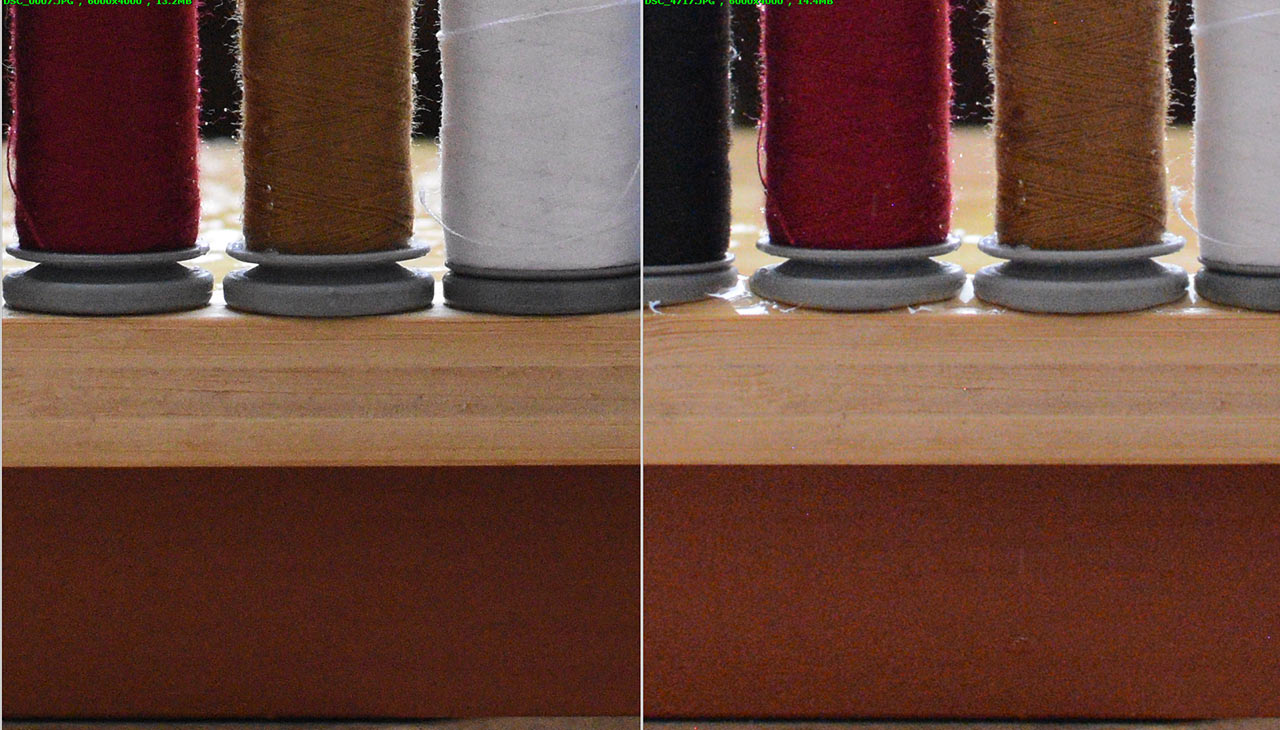 ISO 6400 – D5500 on the left, D7100 on the right
ISO 6400 – D5500 on the left, D7100 on the right 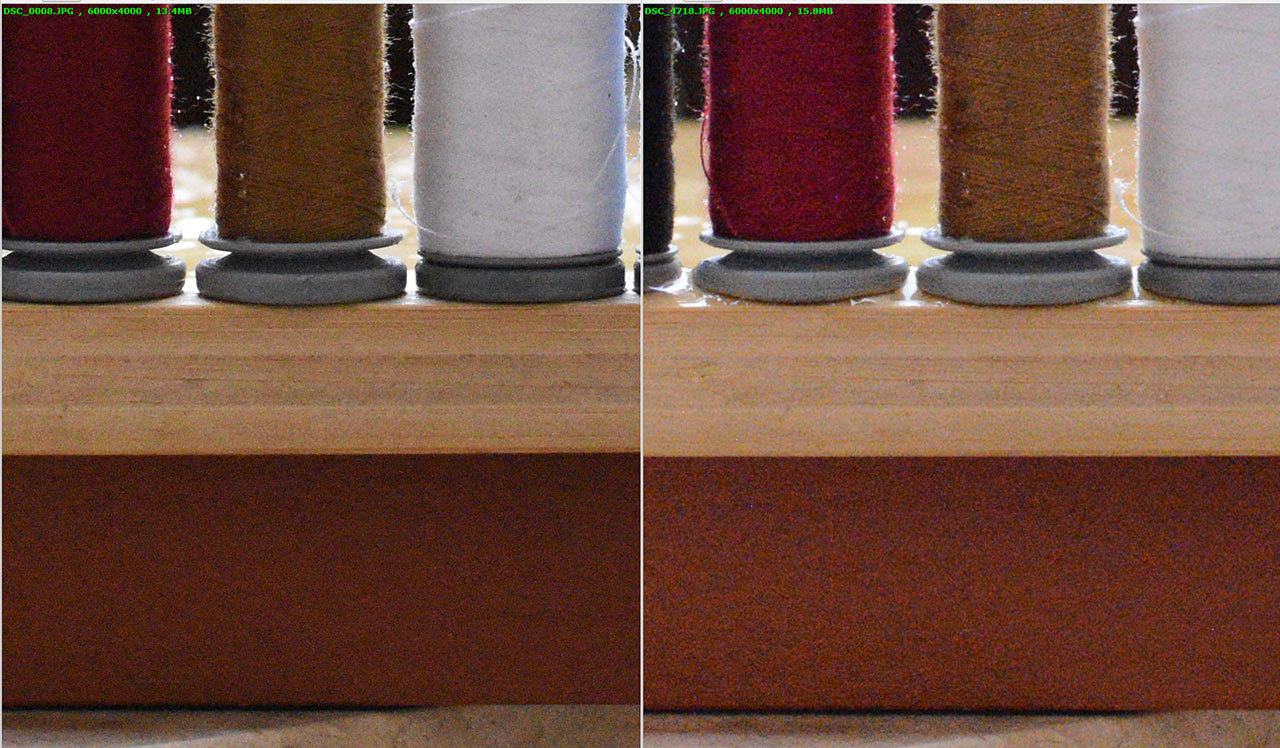 ISO 12800 – D5500 on the left, D7100 on the right
ISO 12800 – D5500 on the left, D7100 on the right
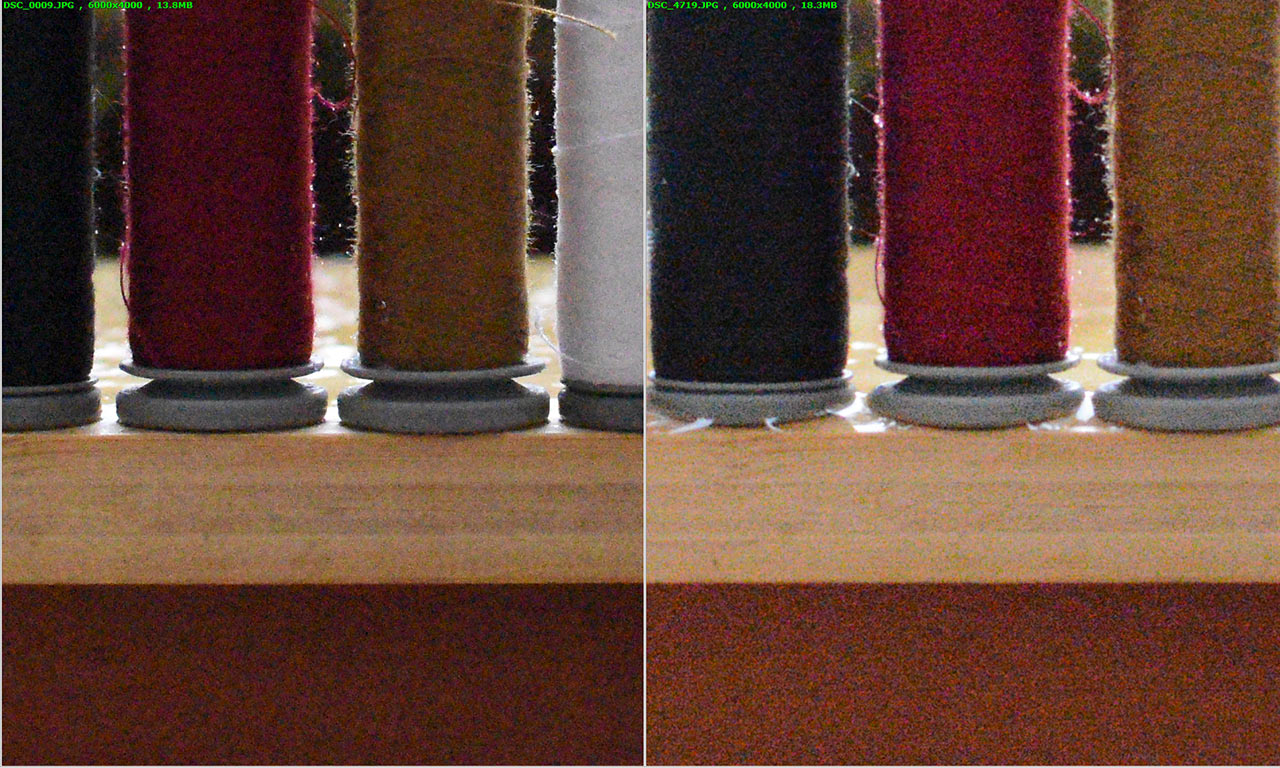 As you can see the ISO has been dramatically improved from the older D7100 (1-1.5 stops) but to be honest we don’t think there is a lot of difference from the D5300 (we didn’t have the D5500 next to the D5300 so we didn’t do a side-by-side but you can read our full D5300 review and try and compare).
As you can see the ISO has been dramatically improved from the older D7100 (1-1.5 stops) but to be honest we don’t think there is a lot of difference from the D5300 (we didn’t have the D5500 next to the D5300 so we didn’t do a side-by-side but you can read our full D5300 review and try and compare).
What is more striking is how sharp the new sensor/processor combo is – looking at both cameras at basic ISO looks as if the Nikon D7100 got a layer of blur in Photoshop (it didn’t, and the focus was spot on as well), we have seen this in the D7200 and it is impressive and certainly a significant improvement over older technology (which wasn’t bad to begin with).
Viewfinder, Screen, WIFI
The viewfinder of the D5500 is pretty small with the same coverage (95% and 0.82x magnification) as the D5300. To get a better viewfinder you will need to get an D7XXX model at the very least if you are looking for a Nikon.
The screen is the highlight of this camera (at least compared to the previous D5300). It is large and pretty decent (although viewing angles especially in bright daylight outdoors could be better (but this is a problem of most cameras to be honest).
The vari-angle screen works well (just like on the D5300) although we actually prefer a tilt screen (and yes we know that some of you will disagree with us on that) but it is simpler and more convenient (and faster) and for us we usually don’t have a need for the extra capabilities of the vari-angle aspect of the screen (just tilting up or down is enough in most cases).
The vari-angle touch screen of the D5500
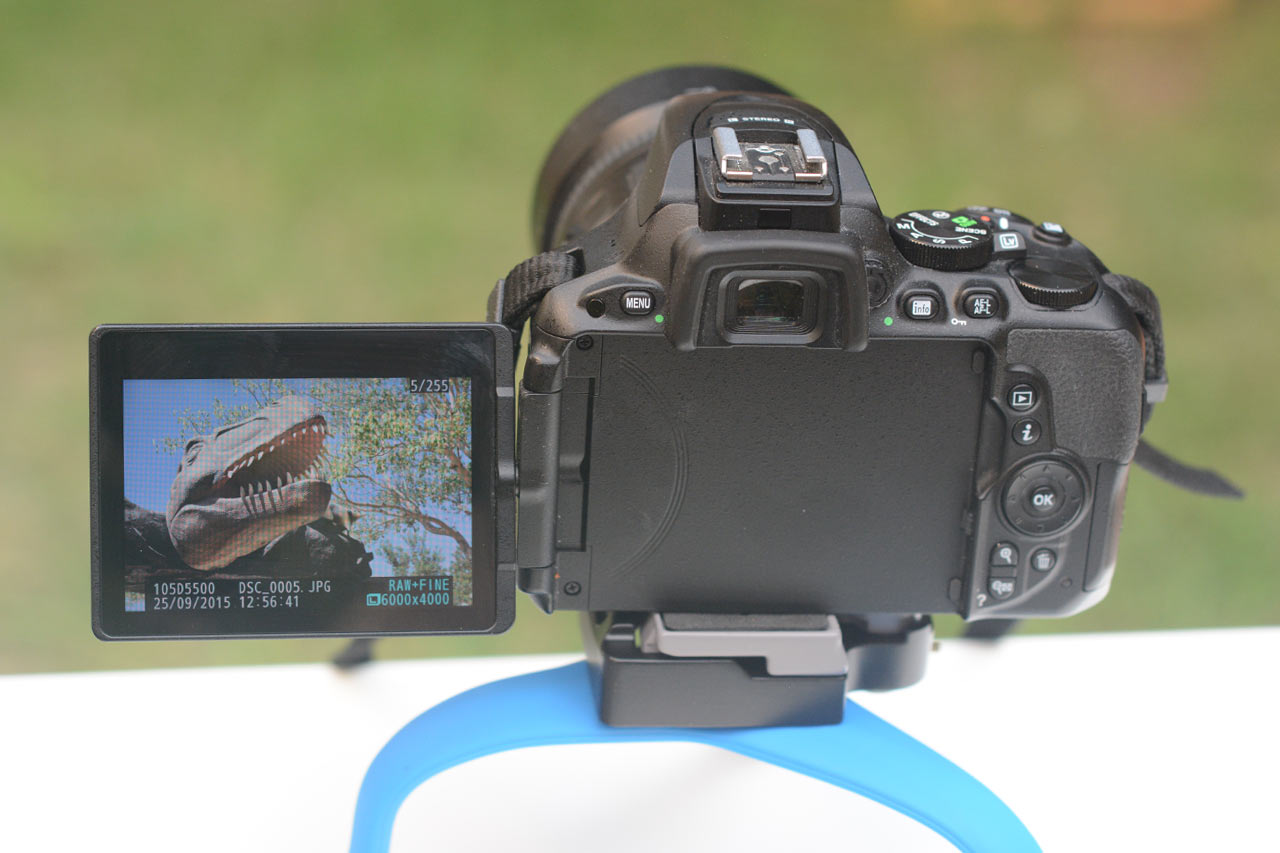 Getting to the more interesting part – the touch display. Generally speaking it works well and for reviewing images it is super easy (we are in late 2015 after all and everybody is using a smartphone/tablet etc. so we don’t need to tell you). But for shooting and moving between menus it is a different story.
Getting to the more interesting part – the touch display. Generally speaking it works well and for reviewing images it is super easy (we are in late 2015 after all and everybody is using a smartphone/tablet etc. so we don’t need to tell you). But for shooting and moving between menus it is a different story.
Nikon didn’t change the menus – they still look more or less exactly like they did on the older D5300. On their own they are easy to navigate and use however for use with a touch screen they are far from ideal. You need (again) small hands and precise pressing to select the right item and we missed the specific menu line quite a few times (you can even see this in the video).
Nikon implemented a very nice feature which allows you to control the focus point using the top right corner of the screen with your finger while you look through the viewfinder. We love the idea (although Nikon isn’t the first to do this – we believe Olympus tried this before), however the actual performance isn’t perfect and sometimes we got a focus point which we didn’t want so Nikon still needs to work on this feature a bit (maybe even in a future firmware update – who knows).
Changing the AF point with the touch screen while using the viewfinder
As for the connectivity of the D5500 – Nikon decided to abandon the GPS in favour of NFC for faster WIFI setting. On the one hand GPS is a really cool feature and we actually liked it in the D5300 on the other hand it used to really drain the battery so the implementation wasn’t good and this is probably why Nikon abandoned it. As for the WIFI – it is still very (very) basic and you can not do anything with the Nikon app except take pictures and share them (forget about controlling your camera from your smartphone/tablet with the official app. On the bright side – third part apps/software might be able to help here so it isn’t a total waste.
Video
We didn’t do a lot of video testing with the camera but we did try it with our good old Nikon 35mm f/1.8 (DX) lens – image quality is great but the lens (and probably the camera as well) are not great for shooting video with AF as you can see in the video below:
[youtube]https://www.youtube.com/watch?v=URrngesxRa8[/youtube]
As we have said many times in the past – Nikon needs to do something about AF in video mode – Canon has the Dual Pixel CMOS AF technology and Sony/Panasonic have their own things which work pretty well so Nikon is the only major player with no AF solution for video and that is a shame.
3 other things Nikon can improve on the D5500 that has to do with video in our opinion are:
- Add aperture control in video\live-view mode (missing from all current DX cameras).
- Add separate live-view & settings with quick access for both stills and video (like the D7xxx line)
- Add 4k support – just like 1080p became standard for all cameras early in this decade, 4k should be the standard by now (after all most high end smartphones shoot 4K today so a dedicated camera should be able to do this by now).
Conclusion
The Nikon D5500 is a relatively small incremental update to the already very good D5300. If you are an owner of the D5300 there is really very little point upgrading to the D5500 (even upgrading from a D5200 is not going to be a huge update for most users). However on its own, and as a first camera for a beginner (who wants a little bit more than the bare basic of the D3xxx line), the D5500 is a very attractive camera. It has very high image quality (on par with the best APS-C cameras on the market today), vari-angle touch screen with decent AF and the full line of Nikon lenses (and third party F-mount lenses of course), which no mirrorless camera manufacturer can currently compete with.
Not everything is perfect of course – the touch screen – although a nice and useful addition (especially for scrolling between images), was not fully implemented into the menu system (Nikon almost didn’t change anything to adapt the menus to a touch interface – we would really like to see large icons instead of regular menu lines which require pretty tiny fingers and lots of accuracy). Some of the back buttons are too small (even for our relatively small hands) and there are a few things that Nikon could do to improve the video capabilities of the camera (although the quality is pretty good).
At the end of the day our advice regarding the D5500 is simple – if you are looking for a pretty capable advanced entry level camera and don’t need something super small – the D5500 is a very strong contender for your money. If you already own a D5300 (or even a D5200) save your money and wait for a better model (or a higher one).
What we liked
- Very sharp 24MP sensor (considerable improvement over older generation like the D7100).
- Better sensitivity (about 1-1.5 stops better than the D7100).
- Better video quality (especially in low light)
- Useful touch screen (especially with the touch to change AF points feature).
- Integrated WIFI/NFC.
- Great new grip.
What we liked less
- Bottoms are very small (not for people with larger hands).
- WIFI app is very basic (almost zero control of camera functionality).
- Still no aperture control in video.
- Touch screen AF when using the viewfinder still need a bit of work (might be fixable in a firmware update).
- No separate video mode (like the D7xxx series).
Nikon D5500 gallery
The following images were shot with the Nikon D5500, no retouching was done other than cropping (we used the Nikon 35mm f/1.8 DX, the Nikon 70-300mm and the Tamron 150-600mm).










 We would like to thank Hadar for loaning us the camera for review. You can check out more LensVid exclusive articles and reviews on the following link.
We would like to thank Hadar for loaning us the camera for review. You can check out more LensVid exclusive articles and reviews on the following link.

You can support LensVid by shopping with our affiliate partners
Affiliates: Amazon, B&H, Adorama and E-bay.
Why should you trust us?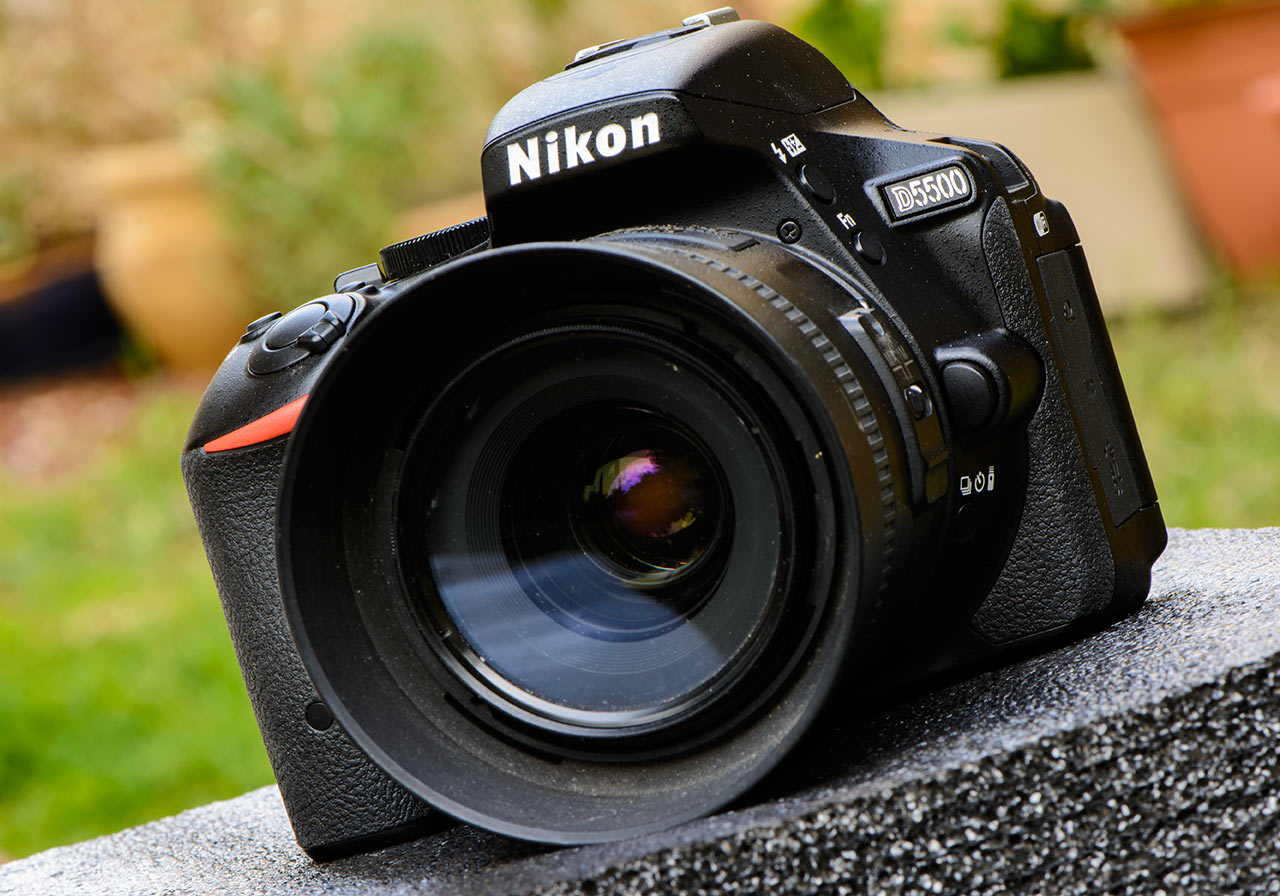

3 comments